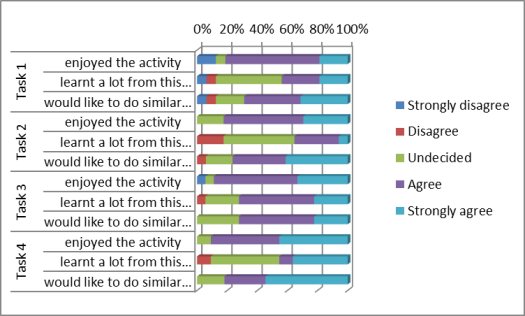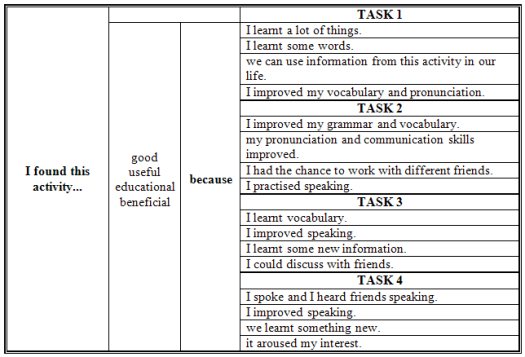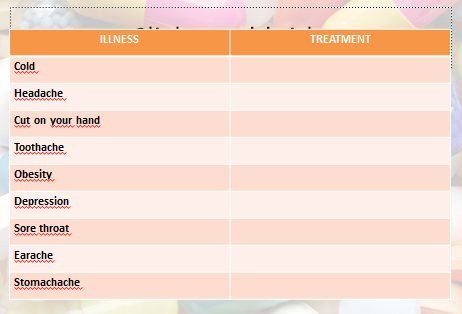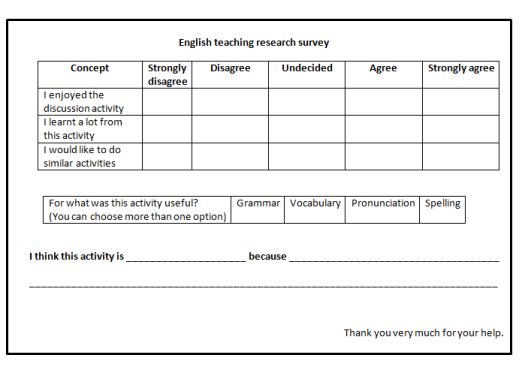Encouraging Passive Learners of English to Communicate More Effectively in Class
Mary Jane Özkurkudis, Turkey
Mary Jane Özkurkudis is an instructor at Izmir University of Economics, Turkey where she currently holds the position of the Head of the Curriculum and Material Development Unit. She holds a BA degree in English Language and Literature and is about to start her MA on Curriculum Development. She is interested in professional development and thus, has completed numerous courses on ELT. Her main field of interest is ELT management. She enjoys doing teacher research and sharing her experiences with other colleagues. E-mail: mary.ozkurkudis@ieu.edu.tr

Menu
Abstract
Introduction
Purpose
Literature review
Methodology
Data collection tools
Data analysis
Results
Conclusion
Reflections and further studies
References
Appendices
When learners are requested to produce speech in a foreign language, they are mostly reluctant and remain passive in class. The aim of this reasearch was to find answers on how to encourage these passive learners to communicate effectively in class by analyzing the underlying reasons. During the research process, learners were asked to complete a variety of speaking activities and were requested to give written and instant feedback by filling in a short questionnaire. They were also observed by a trainer who reflected his views and contributed to the data collection process.
One of the most important skills living things acquire throughout their lives is to learn how to speak and communicate effectively. Communication, in any kind, is a necessity for a being’s survival. The gestures, the posture and the languages; in other words, the ways we express ourselves, comprise a part of our accomplishments in life and exhibit our compatibility.
While analyzing the speaking skill in a second or foreign language in an educational context, first of all, we should keep in mind that the environment learners are exposed to is artificial. They know that everyone else in the classroom speaks the same mother tongue, then why should they struggle to express themselves in a language they feel they are not efficient enough. Thus, this leads to having a classroom full of learners reluctant to speak.
The purpose of this research was to focus on the many reasons for learners’ reluctance to speak by answering the question “how can I encourage passive learners of English to communicate more effectively in class?”. The points focused on were the learners’ interlanguage, psychological domains, the materials, methods and techniques used in the lesson, the learner’s learning styles and Teacher Talking Time. Learners, based on the material and topics covered in their book and based on their learning styles, with different speaking strategies, were introduced to speaking tasks where they had to produce sentences and express their opinions. Later, they were asked to complete a feedback questionnaire from which data was collected. Other ways of gathering data were observation of the learners in class, oral feedback from the learners and a trainer’s observation.
This paper will explain in detail the planning, implementation and delivery stages of the research, the collection and analysis of the data and will conclude by a summary of the outcomes and further studies.
“To most people, mastering the art of speaking is the single most important aspect of learning a second or foreign language, and success is measured in terms of the ability to carry out a conversation in the language.” (Nunan, co-cited in Riyaz and Mullick, 2016: p.59) As mentioned before, communication is the basis of expressing ideas or opinions and a means of survival. Being able to use the language means being able to solve all your problems. Therefore, vital importance is given to speaking correctly and to being understood. This factor may cause some learners to become reluctant to speak and remain passive.
Apart from psychological reasons, the causes of resistance to speak may be the learners’ interlanguage, motivation and material used in class. The material covered should be designed to appeal to the learners and hence, to encourage them to speak. Teachers should remember that in real life people produce speech to accomplish an aim; this may be for a simple action like buying grocery or for a more complicated one like giving a lecture. Therefore, context should be provided to the learners and the techniques used in class should cover their needs. Thus, the use of authentic language will keep the learners more interested in the task they are doing as they will have the chance to communicate in a more natural environment using authentic materials and more comprehensible tasks. (Kayi, 2006)
Learners should understand that it is important to speak perfect English, but the main focus should be on being able to express one’s self and on being clearly understood by the person the message is conveyed to. (Scrivener, 2005) In fact learners should be made aware that the more they practise, the more accurate sentences they will start to produce.
Mentioning practice, another important point is, if we want learners to speak, then we should let them speak. In other words, we should cut down Teacher Talking Time. Some teachers get very involved in their students while doing speaking activities and finally, they end up doing all the speaking/talking. It should be recognized that a chance should be given to the learners to speak as they are the ones learning the language, not the teacher. Learners learn best when they talk to each other and the teacher’s role should be to stand back. Learners are well trained in how to speak to their teachers, however; they do not know how to listen to each other. Therefore, teachers should set the goal and leave the stage to their learners. (Barton et al., n.d.)
Some activities to be done in class to increase learners’ involvement in speaking can be pair work and group work activities, jigsaw tasks, role-play and simulation, information gap activities, and interviews. (Richards, 2006) All these include an element of interaction providing the learners with an opportunity to gain ideas and to use the language before delivering it to the whole class. Moreover, such activities arise learners’ interest in the material covered as well as help them to learn how to integrate the new learnt things by solving problems, searching for different options and looking for new possible solutions. (Blather, 2009) In this way, the learner feels safer and has less chance to stumble and make mistakes and thus, feel deteriorated.
Furthermore, giving appropriate feedback and providing correction can trigger the learners’ ambition to speak. It should be kept in mind that what is expected from the learners in terms of speaking should be something authentic, realistic and achievable.
Design
Tasks were prepared according to the topics covered in the learners’ reading and writing book. Some of these were pre-reading speaking tasks to raise the learners’ awareness and to introduce the topic to the learners and some were while reading and post-reading speaking tasks concerning the reading text. The research consisted of four tasks carried out sequentially, on a weekly basis. The tasks involved were based on indirect and interactive instruction and experiential learning. The duration of each task ranged from twenty-five minutes to an hour.
Participants
The participants were nineteen B2 level learners of English in the preparatory school of a private university and a trainer from the Teacher Development Unit.
Materials
As materials, extra speaking tasks were produced for Unit 3 (Medicine), Unit 4 (Risk), Unit 6 (Environment) and Unit 7 (Architecture) of Sowton, Chris. Unlock 4 Reading & Writing Skills, Cambridge University Press, 2014.
Procedure
Speaking Task 1 (Role-play)
This task was prepared as a pre-reading task for Unit 3 of the afore mentioned book and the topic of the unit was health and alternative treatments. It was carried out in the third week of an eight-week reading and writing course and it lasted forty-five minutes.
Learners were allocated numbers from 1-9 and then, they were asked to sit together with the person with the corresponding number. After that, they were shown a video about two friends, one of whom was ill. The other one gave him some advice on what to do. Learners were asked to notice who the people were and what they were talking about. As answers were elicited, a model dialogue was written on the board. Learners were distributed role cards (Appendix 1) and were asked to produce a similar dialogue to the one they watched on the video and they had on the board. An empty table with the names of the illnesses (Appendix 2) was projected on the board based on the Unlock your Knowledge section of the unit. After the learners had acted out the dialogues, the suggested treatment method/-s were written on the board and other types of treatments were elicited. Later, learners were asked to discuss in pairs the questions in their book; if medicine from a doctor was the best remedy and if they would use alternative medicine to treat a serious illness. This was followed by a whole-class discussion.
Speaking Task 2 (Group Discussion)
This task was prepared based on the Unlock your Knowledge and Watch and Listen sections of Unit 4 of the course book (see 5.3). It was carried out in the fourth week of an eight-week reading and writing course and it lasted twenty-five minutes.
In the pre-reading section of the unit learners were introduced to the idea of risk and its different types. They were asked to find answers to the question why people take risks and then, they watched a video about roller coasters and the risks they held. After the tasks in the book, learners were divided into four groups and were shown a picture of an amusement park. They were told to randomly choose a number from 1-4 and later were shown four rides (Appendix 3). They were told that they were manufacturers of the ride corresponding to their number and were asked to discuss the risks of that ride and how to prevent them. They, later, had to present their report mentioning the risks and prevention methods to the owner of the amusement park, in this case, the instructor, who then decided to buy the best presented ride.
Speaking Task 3 (Jigsaw Reading/ Problem Solving)
The first reading text in Unit 6 of the course book (see 5.3) was replaced with other texts from the internet with the same topic (disaster mitigation). It was carried out in the fifth week of an eight-week reading and writing course and it lasted an hour.
Before the task, learners were shown a powerpoint presentation where they named different types of natural disasters (Appendix 4). As a whole-class discussion, they talked about the disasters encountered in their country and whether they could be prevented or not. After focusing on lexis, learners were distributed three different reading texts; one on earthquake, one on flood and one on avalanche mitigation (Appendix 5). They were asked to read their text and answer the guiding questions. When they finished reading and answering all the questions, they were put into groups of three where they told each other what they had read about without looking at their reading texts. After the discussion, learners were given a case study (Appendix 6) where they had to find solutions to the problems in an imaginary town having in mind the information they had read and discussed on disaster mitigation.
Speaking Task 4 (Picture description/ Guessing)
This task was used as a pre-reading activity based on Unit 7 of the course book (see 5.3) where learners were introduced to famous landmarks and to the architecture of these buildings. It was carried out in the sixth week of an eight-week reading and writing course and it lasted forty-five minutes.
Learners were shown the picture of a museum of miniature monuments in Turkey- Miniaturk and were asked to talk about that museum. Then, they were told that a similar museum of monuments from all around the world- Miniaworld was going to be built in their city. They were divided into groups of five and were told that they were the architects who would design this museum. Each group was given a different set of nine pictures of famous landmarks and was told to choose three of them to place into the museum. They had to search the internet for some information as they would describe them to their friends in the other groups and were going to say why they chose them. After completing their task, learners were, then, placed into new groups and were provided with pictures of all the landmarks (Appendix 7). Every learner without telling the name described the landmarks they chose while the others tried to spot them among the pictures. Later, they explained why they had chosen those three landmarks. After the discussion, all landmarks chosen were elicited and learners explained where they were located, why they were important and what type of architecture they had.
Data was collected through a feedback questionnaire (Appendix 8) students filled in immediately after the completion of the speaking activities. In the first part of the questionnaire they expressed their attitude towards the tasks, stating if they had found the tasks appealing and if they had learnt anything from those tasks. In the second part, learners were asked to determine what the tasks were useful for and were given four choices (Grammar, Vocabulary, Pronunciation and Spelling). They could choose more than one option. Finally, learners completed an open-ended question where they commented on the tasks and provided the reasons for their opinions.
Moreover, feedback was received from classroom observation carried by a Teacher Development Unit member.
a. Survey/ feedback questionnaire
Qualitative and quantitative data was analyzed separately for each section of the survey.
i. Learners’approach to the activity (attitude questions)
Percentages were taken according to the learners’ responses and a bar chart was created showing the results for each task.
ii. The skill learners improved through the activity (multiple choice question)
The number of responses to each skill was shown on a line graph.
iii. Learners’ overall opinion about the activity (open ended question)
Common sample answers were tabulated.
b. Observation feedback
According to the observer (a member of the Teacher Development Unit), when learners are given a responsibility such as the one in Task 3 (jigsaw reading), they are involved more in the task as their contribution is needed for the completion of the task. However, in the case of a whole class discussion, as the question is not directed to a specific person, they do not feel the necessity to contribute and participate.
a.

The results in this section show that most of the learners enjoyed doing the activities and think that they acquired something from them. It can be seen that all tasks were very well received. The last two tasks were especially favoured by the learners because these tasks focused on group work where each individual learner was involved in the process and production of the task. While doing that, learners took responsibility as their contribution was necessary for the task to be accomplished. The context and language provided was authentic. Consequently, based on these results it can be said that learners when given a responsibility and an aim; and when asked to speak about things they may come across with in real life, feel involved in the speaking process and therefore, participate in the on going discussions. Thus, this triggers their motivation for subsequent speaking tasks.
b.

Based on the responses given by the learners, it can be seen that learners found the tasks beneficial in terms of improving mainly their vocabulary and pronunciation. As they improve these skills, they feel more confident to communicate. Here, we can see that both accuracy and fluency play an important role on learners’ desire to speak. Having enough knowledge of the language and a correct pronunciation prevents them from feeling shy and being afraid of making mistakes; thus encouraging them to speak.
c.

According to the answers given by the learners, it can be inferred that when given the purpose, the context, and the opportunity to get ready for their talk and when other learners are also involved in this process, they feel they have learnt something, have improved their skills and have accomplished their task.
This study has proved once more the importance of creating the correct environment for the learners to improve their communication skills, which as a result they will be able to use more effectively. We should keep in mind that no one will be able to express their ideas when confronted with a sudden question, and this is more difficult while learning a foreign language. To encourage our learners to speak more in class, we should give them a purpose and create an authentic context. We need to provide them with the necessary language and ask them to get and share opinions. We should give them the necessary time to prepare their speech. Therefore, they will not be shy to speak as they will have already practised the things they want to say. By giving them some responsibilities, we should encourage them to feel a part of the process, to feel that they are contributing.
This research was very useful for me in the sense that I had the opportunity to put myself into my learners’ shoes and see what their needs were and what would work and not. In the end, I gained a classroom full of enthusiastic and motiveted learners.
I am planning to continue doing research on communication skills in the classroom and this time, I would like to focus on the strategies, planning and implementation of effective classroom discussions. Consequently, I would like to conclude by a quote that inspired me to continue my studies on this skill; “You are not allowed to say ‘I don’t know’ in this class when asked a question. You are not required to know, but you are expected to think. So if I ask you a question and you don’t know the answer, you are responsible to think of an answer, to guess, to speculate, to wonder aloud.” (Barton et al., n.d.)
Barton, J., Heilker, P., & Rutkowski, D. (n.d.). Fostering Effective Classroom Discussions. Retrieved April 29, 2016, from http://www.mhhe.com/socscience/english/tc/pt/discussion/discussion.htm
Blatner, A., M.D. (2009, October 18). Role Playing in Education. Retrieved May 02, 2016, from http://www.blatner.com/adam/pdntbk/rlplayedu.htm
Kayi, Hayriye. Teaching Speaking: Activities to Promote Speaking in a Second Language. The Internet TESL Journal 12.11 (2016). Iteslj.org. Nov. 2016. Retrieved March, 9, 2016, from http://iteslj.org/Techniques/Kayi-TeachingSpeaking.html
Richards, Jack C. Communicative Language Teaching Today. Cambridge UP, 2006. Cambridge. Web. 9 Mar. 2016.
Riyaz, Hafsa, and Aban Parvaz Mullick. Problems in Learning English Speaking Skill: A Study of Higher Secondary Students in Sinagar, India. International Journal of Interdisciplinary and Multidisciplinary Studies 3.2 (2016): 59-69. www.ijims.com. 2016. Retrieved March 9, 2016, from http://www.ijims.com/uploads/c06bf137f4c9f110af399.pdf
Scrivener, J. (2005) Learning Teaching. 2nd ed. Macmillan ELT.
Sowton, C. (2014) Unlock 4 Reading & Writing Skills, Cambridge University Press.
Appendix 1

Appendix 2

Appendix 3

Appendix 4

Appendix 5 (One sample)
What is flood mitigation?
Flooding can happen in built up urban areas due to an increase in the rate of storm water, or in towns and suburbs built within floodplains. Poor storm water management can also cause localised flooding. Depending on locality and nature of the flooding, a number of structural and non-structural mitigation measures may be available. However, these measures can only lessen the impact of flooding. You can not stop heavy rain or hşgh tides.
Structural flood mitigation is where physical sructures are constructed or modified to reduce the effect of flooding on individual properties. Building dams or bridges is one structural way to mitigate floods. However, these should regularly be checked and if necessary, be repaired. When it comes to non-structural mitigation, detailed survey of flood affected residences can increase the accuracy of flood modelling. Furthermore, as many floods occur at night, early warning systems are extremely important to provide residents with the ability to move vehicles, collect pets and valuables and to use personal emergency plans. Each house should have an Emergency Kit and an Emergency Plan.
(Adapted from www.lands.nt.gov.au/flooding-in-the-NT/what-is-flood-mitigation)
Answer the following questions.
- Where can flooding occur?
- What is an example of structural way of mitigation?
- What is a way to increase the accuracy of flood modelling?
- What can people do thanks to early warning systems?
|
Appendix 6
| You are working in “disaster mitigation”. The mayor of “Glass Town” approached you for some advice. “Glass Town” is unfortunately built on an earthquake zone. There are some low buildings in town and the construction of new high buildings will start next month. The town is near the mountains and there is a big forest around it. As it is away from the city centre, it gets its water supply from the big dam nearby. However, the dam is really old. The weather is very harsh in “Glass Town”. It snows a lot in the winter which rises the possibility of an avalanche, and it usually rains in the summer. Can you help the mayor with the necessary mitigation strategies? |
Appendix 7

Appendix 8


Please check the Teaching Advanced Students course at Pilgrims website.
Please check the English Improvement course at Pilgrims website.
Please check the Creative Methodology for the Classroom course at Pilgrims website.


|